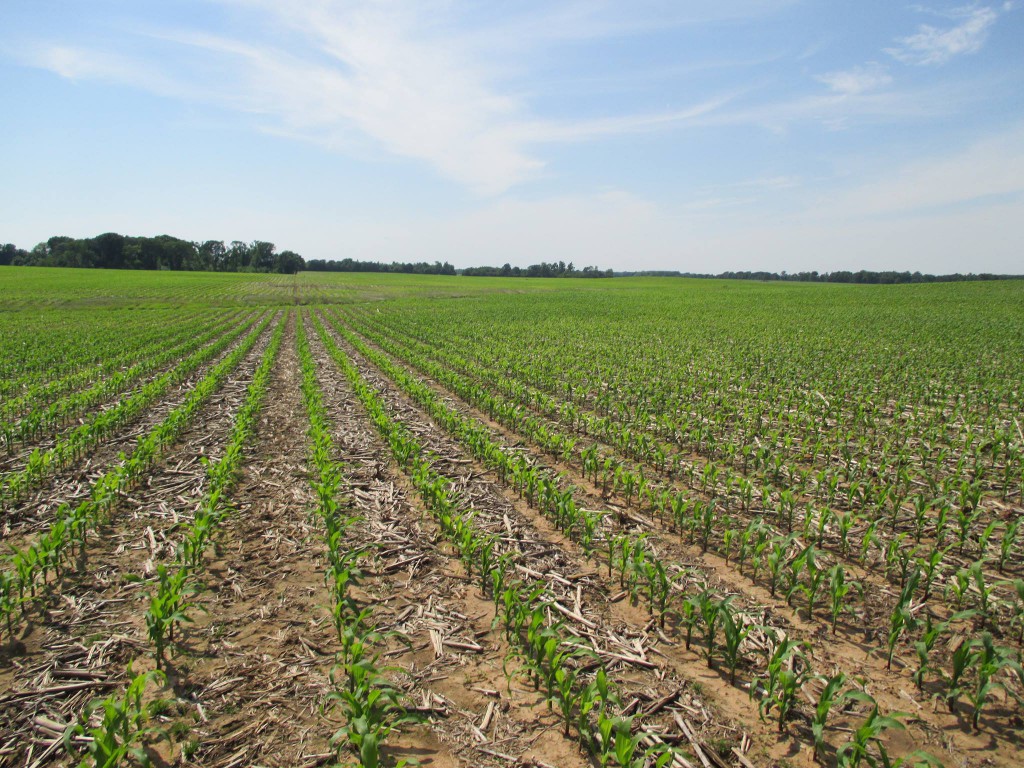Generally, a thorough planter check before planting and regular in-season planter checks are recommended to avoid any planting issues or mistakes that can cause a significant emergence and/or yield impact. However, planter issues are common and sometimes hard to notice, especially for planters without a seed monitor. Even though growers (or agents and consultants helping growers) cannot do a whole lot once the crop has already been planted, identifying and troubleshooting these planter problems are important to find the exact cause behind the issue(s) so they can be fixed and same planting issues/mistakes can be prevented from happening when using the same planter for other crops or planting same crop in other fields. Below are few examples (with pictures) of some common stand issues that can be attributed to planter problems and can help in identifying and troubleshooting planter problems in the field. As a reference, the picture below shows a stand with uniform emergence and plant spacing which is indicative of a good planter operation and performance.

Skips and Multiples: Both skips and multiples largely occur due to issues with seed singulation. A skip is identified as a missing seed/plant within a row whereas a multiple is identified as more than one seed (doubles or triples) at the same location or close enough that they will impact each other. Not all skips are caused by planter issues as there can be seed in the soil that did not emerge due to other issues, so make sure to verify if it is a true planter skip by digging the soil. Some common causes for skips and multiples are:
- Improper seed meter setup (doubles eliminator, brush type and alignment, etc.)
- Low or high vacuum pressure than recommended
- Not enough tension in drive or driven chains (ground wheel and/or seed meter)
- Seed bouncing out of the furrow

Uneven Plant Spacing: While skips and multiples also results in uneven plant spacing, here I am referring where plants are present in the row but are not spaced uniformly. This could be caused by both issues with seed singulation or seed delivery from the meter exit point to the furrow. Some common causes for non-uniform plant spacing are:
- Worn out seed tube guard or cracked seed tube
- Excessive row-unit bounce due to variable field conditions
- Faster planting speeds
- Seeds dropping directly out of the seed meter

Delayed or Non-Uniform Emergence: This can be identified as plants at different growth stages within the same or among the planter rows. Usually, delayed or non-uniform emergence issues are sometimes hard to troubleshoot and attribute to planter as a number of other factors including seed quality, fertility, diseases, etc. can affect crop emergence. When planter is a culprit, it mainly has to do with operation of row-unit components such as opening-discs, depth setting, closing wheel, etc. Few common planter related issues that can result in delayed or non-uniform emergence are:
- Worn out opening-discs creating improper furrow (W-shaped instead of V-shaped)
- Seed depth variations due to inadequate seed depth or downforce setting
- Gauge-wheel wobble or too much gap between the gauge-wheel and opening-discs
- Inadequate closing wheel pressure or setup resulting in poor furrow closing

Hopefully, this information can help you understand and identify some common planter-related stand issues and what planter components to check when troubleshooting and fixing these common issues before or during the 2021 cotton and peanut planting season.
